Combing the Spanish countryside for cultural gems
More often than not, the environment framing the monuments you visit with Viabo Travel will take your breath – and even your gaze – away. There’s a calculated reason behind each and every site’s careful positioning, whether for strategic, economic, communications, or recollection and meditation purposes. This fact, together with the wide panoply of geographic settings across the Iberian Peninsula, compose motifs that will leave you in a state of utter awe and inspiration.
The sheer variety of sites available can be overwhelming for first-time travelers, but this is where the Viabo Travel team’s local knowledge and expert insight really shines. We’ve spent a lot of time grouping appropriate sites and itineraries together to create well-balanced tours that are structured according to specific themes. We would be happy to tailor a tour to suit your particular penchant – whether that be architectural layouts and monument structures, ancient Roman roads, the medieval St. James’s Camino, the agricultural power of the Kingdom of Castile, or the fighting powers from beyond Iberia, to name a but few.
Whether it’s the attractiveness of the monuments themselves, their deeper reasons for being or a particular period in history that fascinates you, Viabo Travel’s lecturers can tailor a cultural and historical programme to suit your interests. And yes, gastronomy and wine are a very popular and enjoyable theme that our guides are equally knowledgeable in. After all, eating and drinking is a great way to experience and celebrate Spain at her best!
La Rioja is both a province and an autonomous region located in the North of Spain.
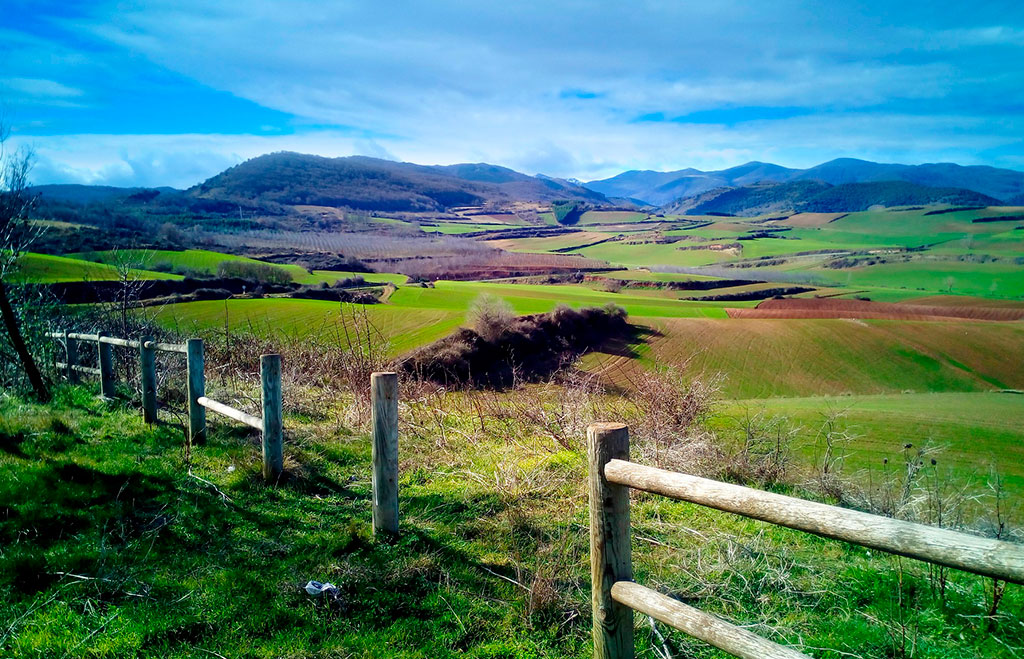
It is situated between Castilla La Mancha to the south, Castilla-León to the west, Aragón to the east and Navarra and the Pais Vasco to the north.
It is a very fertile part of Spain and has an abundant supply of water due to seven major rivers that flow through it. Not altogether surprisingly, this area of Spain has over 500 wineries and is internationally famous for the quality of its wines.
This region is also closely linked to the famous Way of Saint James pilgrim route and boasts several cultural attractions. Apart from its capital, Logroño, you’ll be able to explore other places such as Santo Domingo de la Calzada and its cathedral, and San Millán de la Cogolla, the site of the Suso and Yuso monasteries (both declared UNESCO World Heritage Sites and known for being the birthplace of the first written words in the Spanish language).
Culture and wine together make an unbeatable combination. Add to that some amazing natural attractions – in the form of Mediterranean forests, high mountainous areas, the Sierra de Cebollera Nature Reserve and the Arnedillo Biosphere Reserve – and it’s safe to say that La Rioja will satisfy every traveler’s appetite.
Sources:
https://www.spain.info/en/region/la-rioja-province/
https://www.euroresidentes.com/euroresiuk/guides-spain/guide-to-rioja.htm
Galicia’s picturesque landscapes are a combination of green wooded valleys juxtaposed with pristine beaches.
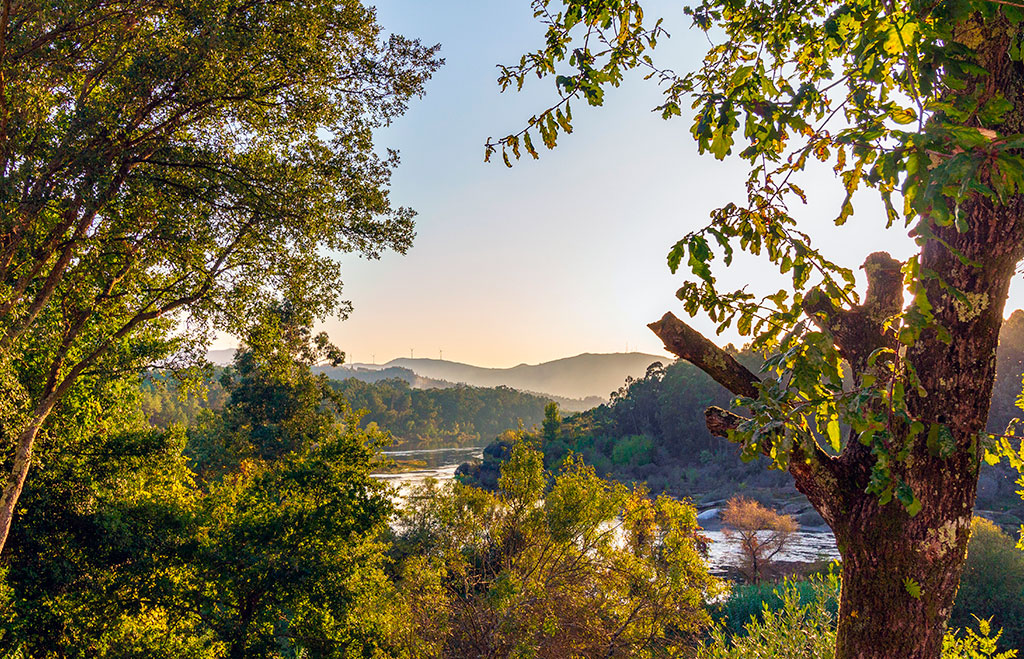
All along the length of its coastline, fed by the Cantabrian Sea and the Atlantic Ocean, you’ll find spectacular cliffs like those on the Costa da Morte and the incredible Islas Atlánticas National Park. It is also peppered with numerous charming villages, both seaside and inland, as well as cities such as Santiago de Compostela, A Coruña, Ferrol, Lugo, Orense, Pontevedra and Vigo.
Galicia is the last stop on the Camino de Santiago and has been a destination for pilgrims since time immemorial. In the 10th and 11th centuries a great number of monasteries, churches, castles, bridges, stone crosses and shrines were built all over the region. Many of them still stand today, in a spectacular state of preservation, providing travelers with an incredible opportunity to marvel at Medieval works of art and granite monuments dating back to the Middle Ages.
The region boasts historical and architectural treasures of incalculable value, but besides the cultural and visual splendour that Galicia offers, its delicious gastronomy is also one of its strong points. Typical Galician produce and dishes include freshly caught shellfish, veal, octopus “a feira” (with potatoes), and gammon with turnip greens. These meals are, of course, to be paired with two of its most famous wines, the Ribeiro and Albariño (each of which have their own wine route).
Sources:
http://www.spainisculture.com/en/propuestas_culturales/el_arte_romanico_en_galicia.html
https://www.spain.info/en/region/galicia/
The Basque Country in northern Spain and southern France is one of Europe’s oldest and most culturally rich regions.
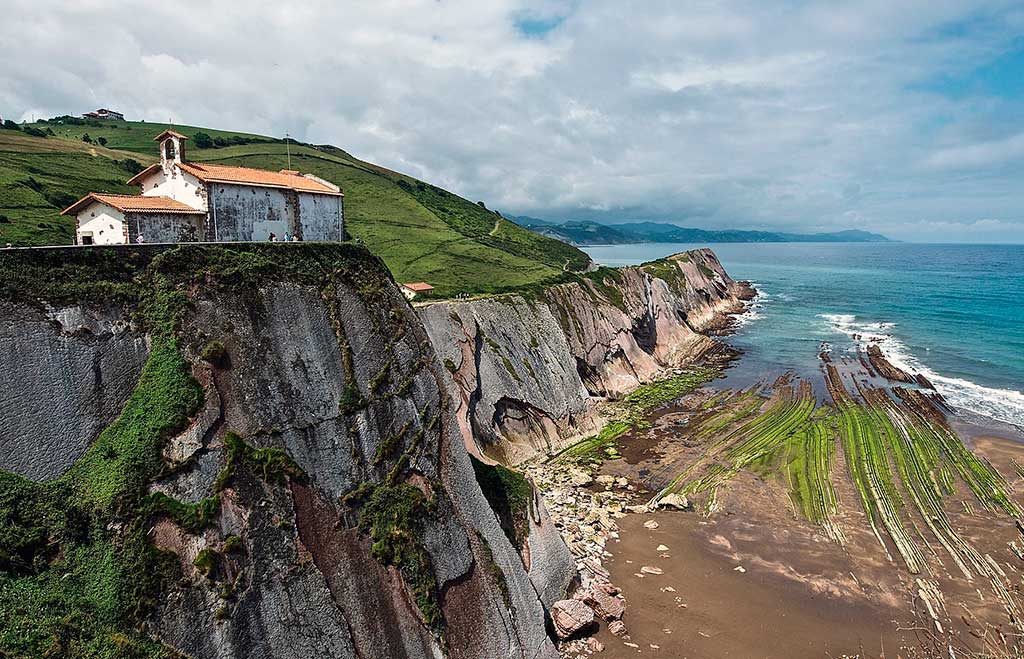
It has a lot to offer visitors, from modern cities, quaint villages and green landscapes to beautiful beaches along a rugged coastline, world-class cuisine (boasting the highest per capita concentration of Michelin star restaurants in the world) and being one of Spain’s best wine regions.
Locals in the Basque Country are fiercely proud of their identity, language and history, and this is celebrated through music, dance, sports, festivals and food. That’s not to say, however, that a new, modern image of the region isn’t emerging. The city of Bilbao was once full of decaying industrial complexes but it underwent a dramatic transformation and is today a mecca for design and architecture. The iconic Guggenheim Museum in Bilbao, designed by Frank Gehry, is the number one tourist destination in the entire Basque region.
San Sebastian, known for its natural beauty as a quaint costal town, is also redefining the Basque image around the world with its extraordinary cuisine. The city has 16 Michelin stars spread across 9 restaurants. It is also one of the best places to eat pintxos (culinary creations in miniature form, commonly served on a bread base).
Once you’ve had your fill of San Sebastian, if that’s even possible, be sure to explore the beautiful town of Hondarribia, located just 20 minutes up the coast, which is fast becoming a well-loved foodie hotspot.
Sources:
https://www.euskoguide.com/
https://www.spain.info/en/region/basque-country/
Castile and León is an autonomous community in north-western Spain.
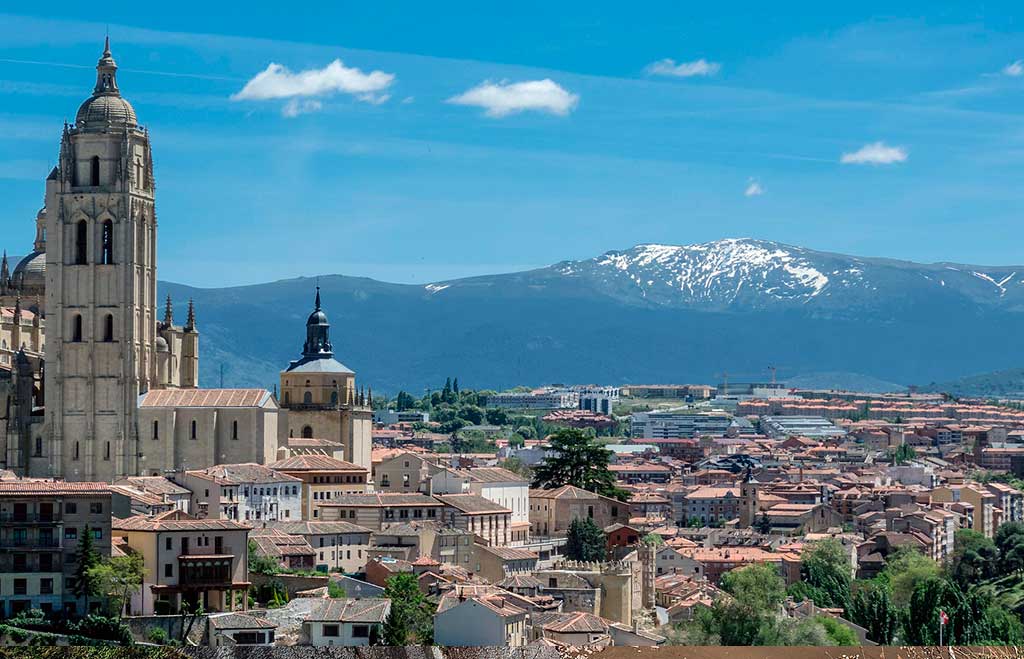
As a destination, it offers some of the greatest diversity of natural landscapes in all of Europe and an equally varied and abundant gastronomy. To top it off, Castile and León boast spectacular monuments, castles and cathedrals, proof of the region’s rich cultural heritage.
A thousand years ago, when Medieval Europe was taking shape, the Kingdoms of Castile and León were the springboard from which the Christian reconquest of Spain spread southwards. The two Kingdoms united in the 13th century, and formed what was to become the Kingdom of Spain.
Highlights in Castile and León include Avila, Salamanca and Segovia (all three World Heritage Cities) and unique attractions such as Burgos Cathedral and the Atapuerca archaeological site, which contains traces of the first settlers in Europe.
The scenery is truly spectacular. Castile and León feature numerous protected natural spaces, one of which is the Picos de Europa National Park, where you’ll see some of Spain’s finest Atlantic forests.
Last but not least – Castile and León’s cuisine. The region specializes in traditional hearty fare, and travelers can expect to feast on typical dishes such as roast milk-fed lamb, black sausage, “botillo” (stuffed cured meat) and roast suckling pig. Add to this a first-rate wine from the Ribera de Duero region and you’ll want for nothing more.
Sources:
https://www.spain.info/en/region/castilla-leon/
https://about-spain.net/tourism/castile-leon.htm
The Ribera del Duero region is home to a rich historic and artistic heritage comprised of the church of Santa María La Real, the monasteries Nuestra Señora de la Vid and Valbuena, as well as collegiate churches, castles, Arab watchtowers, Romanesque art and architecture, and Celtic-Iberian and Roman archaeological sites.
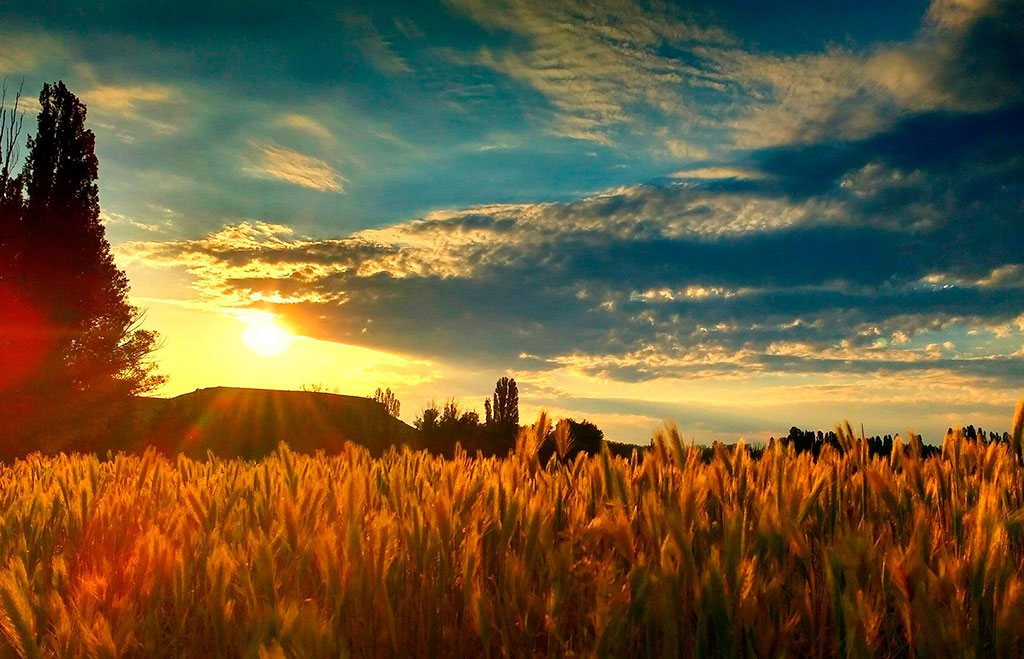
The Ribera del Duero region is well-known for its wine route which runs through four provinces in Castile-León: Burgos, Segovia, Soria and Valladolid. The route, which follows the Duero River, is 115 kilometers long and produces around 50 million liters of wine each year.
The Ribera del Duero Wine Route offers rosé wines, young reds and young oak-aged wines, as well as crianza, reserva and gran reserva categories. Besides being utterly delicious, they all have one thing in common: the Tempranillo grape. This variety is typical of the Ribera del Duero area and gives these wines their unique colour, aroma and body.
Travelers enjoy Ribera del Duero for its natural beauty and rich cultural heritage, but they’d be wise to divert their attentions downwards as well. A highlight when visiting the Wine Route is to venture underground for a wine cellar tour that takes you back in time to the origins of the wine and explains the traditions of the wine-producing families that have lived in the region for hundreds of years.
Source:
https://www.spain.info/en/oenology/wine-route-ribera-duero/
Cantabria, in the north of Spain, is one of the country’s most ancient and historical regions.
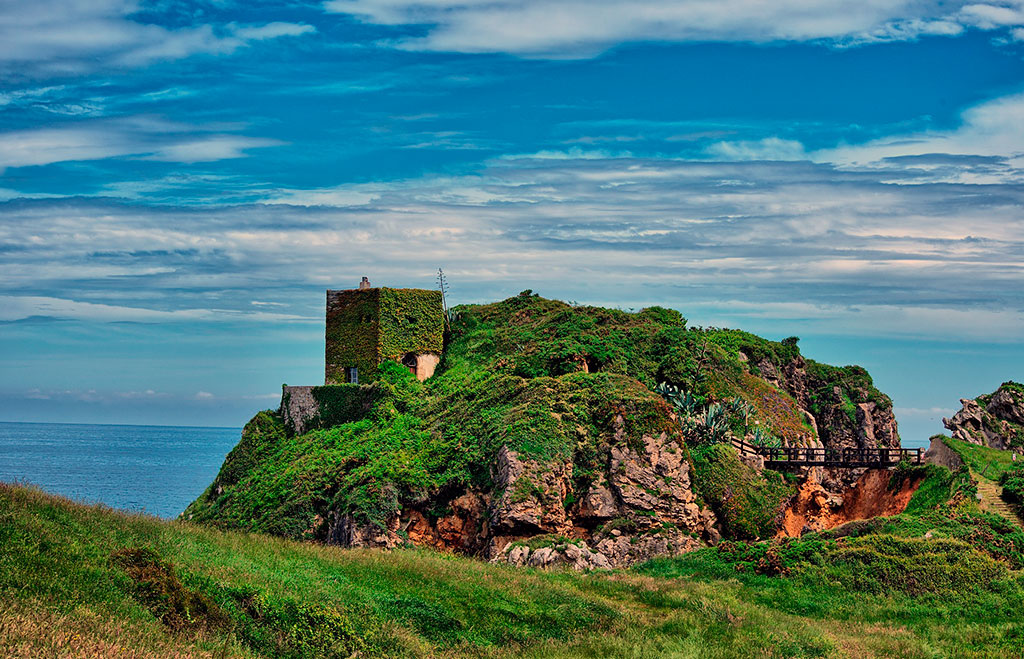
It has been largely overlooked my mainstream tourism, however, making it the hidden jewel of Spain.
The landscape is diverse and the weather unpredictable, but for those who enjoy rural tourism, cultural gems and rugged natural coastlines, Cantabria won’t disappoint.
The region is interspersed with mountain ranges, green valleys, canyons, gorges and wild coastlines. Interestingly, it is one of the richest regions in the world for archeological sites from the Upper Paleolithic period. The famous caves of Altamira date from around 16 000 to 9000 BC and, along with 9 other Cantabrian caves, have been declared to be UNESCO World Heritage Sites.
Cantabria falls within the ‘Green Spain’ region and is abundant with lush green vegetation, forests and natural meadows. There are several natural parks and reserves worth visiting, one of the most important of which is the Picos de Europa National Park. If you have more time, add these natural wonders to your list as well: the Collados del Ason Natural Park, Saja-Besaya Natural Park, the Dunes of Liencres Natural Park, and the Santoña, Victoria and Joyel Marshes Natural Park.
The region’s cuisine is strongly influenced by game and seafood. Think anchovies, fresh shellfish, wild boar and venison.
There really is such a thing as the perfect combination of culture, nature and gastronomy, and travelers will definitely find it in Asturias, in north-west Spain.
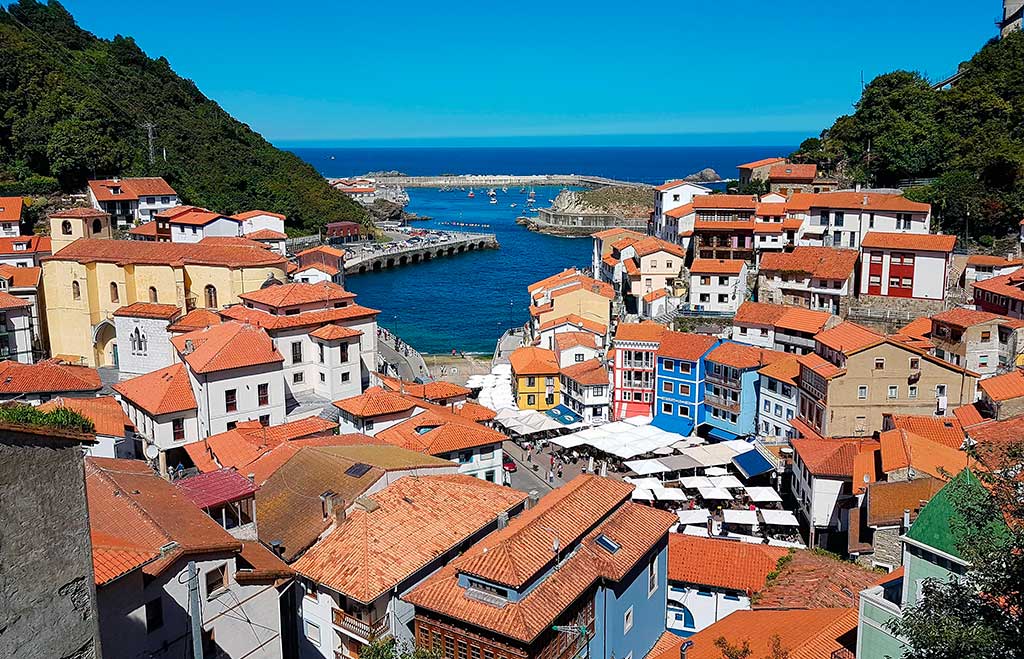
Asturias is home to five prehistoric caves (declared UNESCO World Heritage Sites) and, being the first Christian Kingdom of the Iberian peninsula, also retains numerous noteworthy UNESCO World Cultural Heritage sites of Asturian and Pre-Romanesque art.
The region’s cultural attractions are many, including a range of important monuments in Oviedo and in the Kingdom of Asturias (such as the delightful churches of Santa María del Naranco, San Miguel de Lillo and San Julián de Prados), as well as the various archeological sites, caves and museums of rock art dating as far back as 25 000 years BC.
As far as nature goes, Asturias is part of ‘Green Spain’. Its spectacular scenery alone is well worth the visit, particularly if you travel to the Picos de Europa National Park and the Covadonga Lakes.
The third and final element to toast the beautiful views of Asturias with is, of course, the cuisine. Indulge in Cabrales cheese, a typical Asturian bean stew (“fabada”), and the local cider made from the freshest apples in the region.
Sources:
https://www.spain.info/en/region/asturias-province/
https://www.turismoasturias.es/en/cultura/historia-tradicion
Extremadura is a fascinating region of beautiful contrasts where you’ll be able to visit exceptionally valuable monumental sites, including three UNESCO World Heritage sites, enjoy a host of natural landscapes, and sample one of Spain’s highly-prized cured hams.
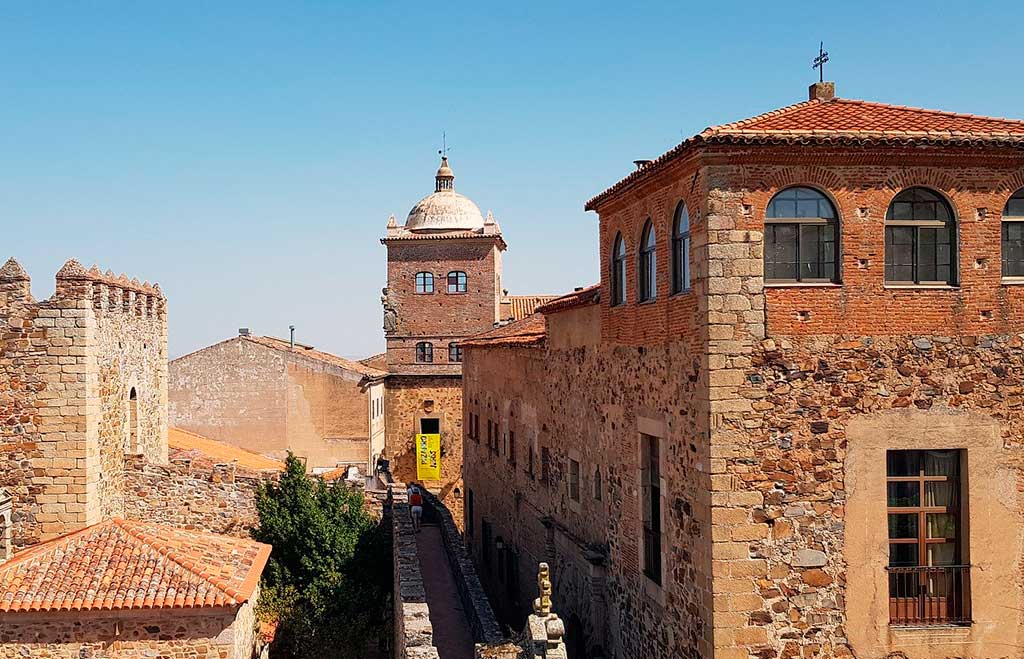
Here are a few highlights not to be missed:
- Mérida, Extramadura’s capital, boasts one of the largest urban archeological sites. Every summer this site becomes the venue for a major theatre festival.
- The historic quarter of the city of Cáceres is well worth a visit, as is the Royal Monastery of Santa María de Guadalupe in the surrounding area.
- To soak up Extremadura’s spectacular scenery (always a favorite with birdwatchers) be sure to add these sites to your itinerary:
- Monfragüe National Park and the Jerte Valley, particularly in spring when the cherry trees are in blossom and the valleys are carpeted in blossoms.
- Dehesa de Extremadura – these wooded pastures are the grazing habitat of the famed Iberian pig and the region’s renowned cured ham. With its Holm and Cork oak trees, it is a fine example of an agro-stockbreeding system in which human intervention has respected the natural environment.
Sources:
https://www.spain.info/en/region/extremadura/
https://www.turismoextremadura.com/en/explora/Morerias-Archaeological-Zone/
https://www.gourmetvip.com/en/iberian-products-from-dehesa-de-extremadura/7324-iberian-acorn-cured-ham-unique.html
Las Loras UNESCO Global Geopark is located halfway between the Castilian Plateau and the Cantabrian Mountain Range.
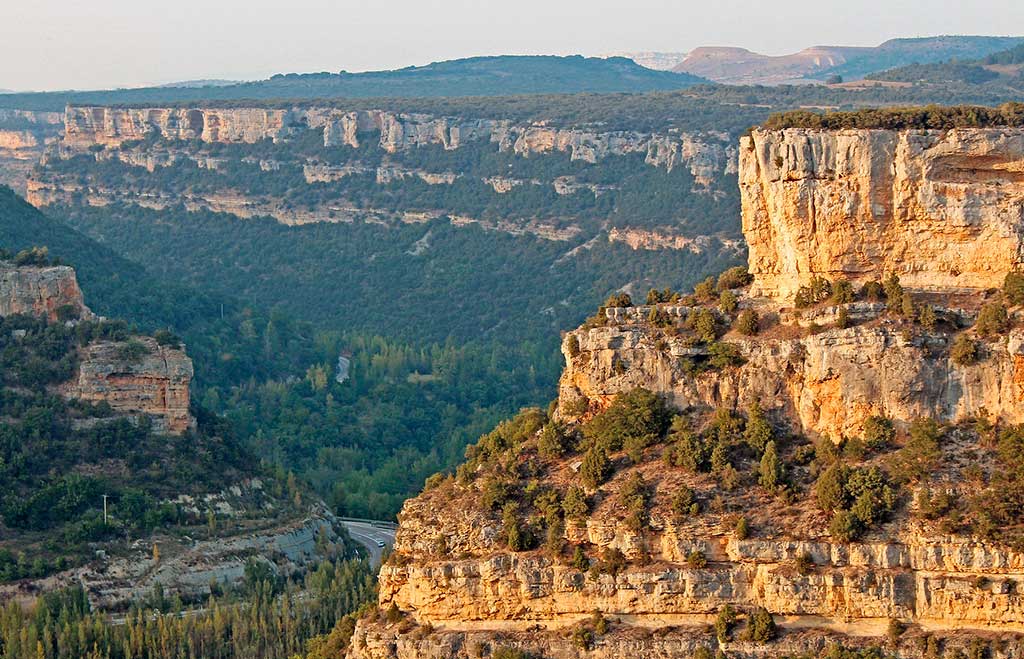
Visitors will experience a wide range of environments and biodiversity, with both Euro-Siberian sites and Mediterranean sites. In addition to this, the unusual topography has resulted in a peculiar landscape where limestone cliffs and significant high altitude moorlands alternate with gorges and deep valleys sunk by the existing river system.
Throughout human history, these natural fortresses have served as a refuge and protection for many people and cultures. Caves, limestone cliffs, ruiniform karstic landscapes and countless waterfalls co-exist with small villages that have preserved the essence of the rural environment, housing large treasures in the form of Romanesque churches, rock hermitages and well-preserved popular architecture.
All in all, Las Loras UNESCO Global Geopark covers 16 municipalities of the Burgos and Palencia regions, yet the area has an extremely low population of less than 15 000 inhabitants. Arable and livestock farming are the main means of livelihood for these municipalities’ inhabitants.
Sources:
https://www.turismocastillayleon.com/turismocyl-client/cm/turismocyl/tkContent?idContent=106237&locale=en
http://www.unesco.org/new/en/natural-sciences/environment/earth-sciences/unesco-global-geoparks/list-of-unesco-global-geoparks/spain/las-loras/
Montaña Palentina is a natural park in the north of the province of Palencia in Castile and León, Spain.
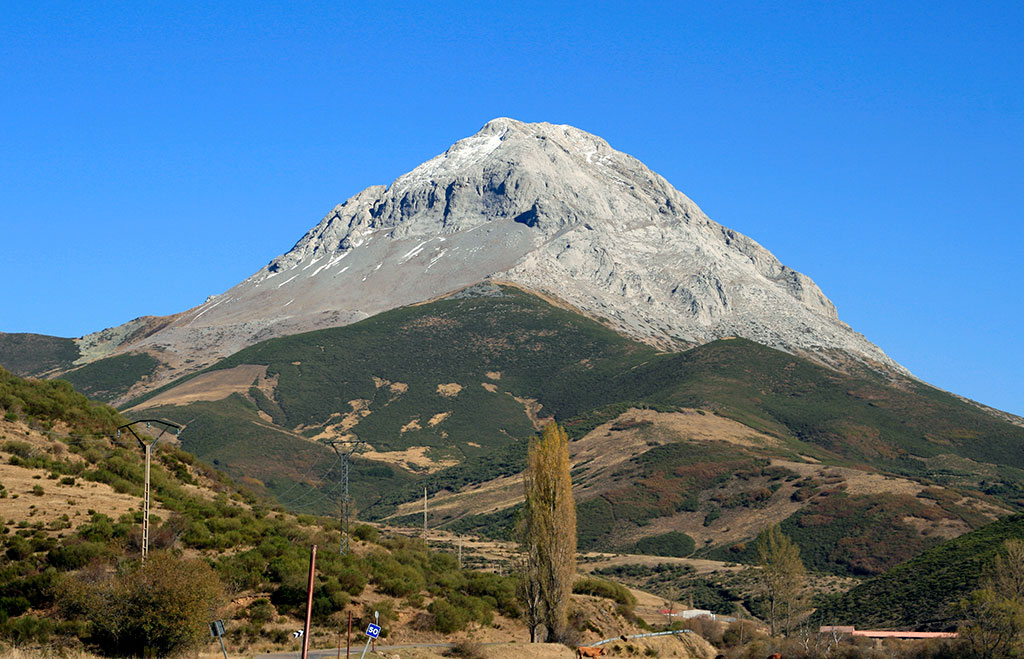
It is perhaps best known for El Espigüete – not the Montaña Palentina’s highest peak, but without a doubt its most well-known. At an altitude of 2 450 meters, it stands on the horizon of the Camporredondo reservoir, impressing awe-struck visitors with its scale and beauty.
Its outline is uncannily shaped like a pyramid, but it’s not only El Espigüete’s shape and natural beauty that have made it famous. Its toughness and exigency attracts numerous professional athletes who want to scale its heights in search of risk and adrenaline. Not surprisingly, the climb’s danger is such that more than 20 people have already lost their lives trying to summit El Espigüete.
Montaña Palentina’s large limestone masses, located in the municipality of Cardaño de Abajo, within the Fuentes Carrionas and Fuente Cobre Natural Park, can be easily seen from great distances. Its south face has soft reliefs, while the north has imposing vertical walls. This, added to seasonal variations, makes its appearance appear very different to summer visitors versus winter visitors.
Photo by Miguel Ángel García
Source:
https://www.somospalencia.es/pico-espiguete-la-piramide-blanca-de-la-montana-palentina/



